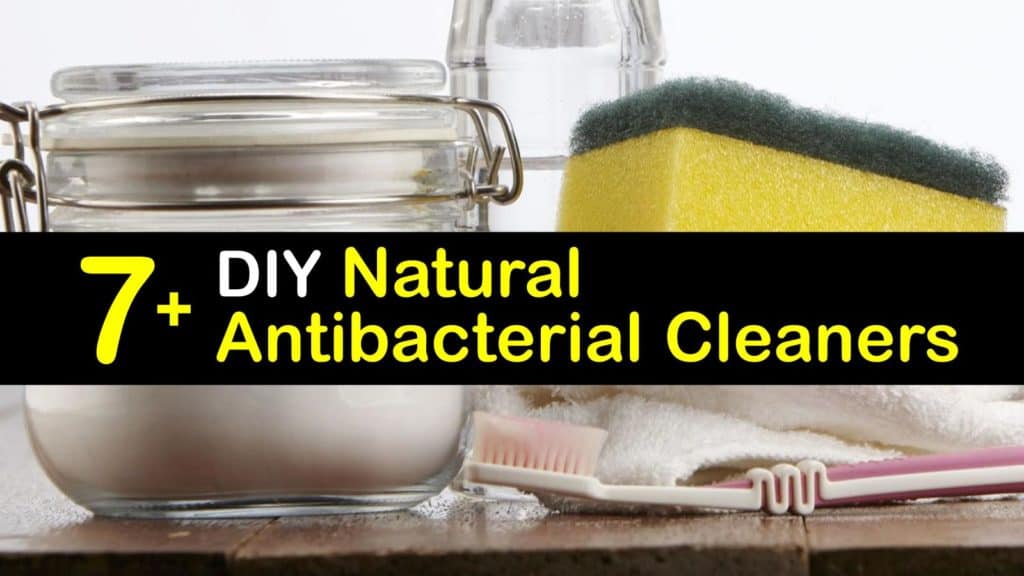Natural Antibacterial Cleaner
Bacteria is literally everywhere, from doorknobs, countertops, and floors to appliances and cutting boards. While there is no escaping it, there are ways to disinfect areas of your home without using harsh chemicals. We show you several ways to make a natural antibacterial cleaner to kill germs on household surfaces.
There is a wide variety of cleaning products on the market, such as Lysol, and many of them contain bleach for sanitizing.
However, it’s not a good idea to use these household cleaners throughout your home on a daily basis since bleach tends to stain surfaces and fill the air with fumes.
The CDC suggests that overusing an antiviral or antimicrobial spray causes resistance over time. However, it’s essential to keep your home clean and relatively germ-free.
Fortunately, there are gentler ways to sanitize and disinfect surfaces, remove dirt and grime, and clean away mildew or mold using homemade cleaners.

Homemade Antibacterial Cleaner with Baking Soda
Make a DIY Antibacterial Cleaner with White Vinegar
Using Hydrogen Peroxide to Make a Natural Antibacterial Cleaner
Make a Natural Antibacterial Spray with Tea Tree Oil
Using Lemons to Make Antibacterial Cleaner
Making an Antibacterial Floor Cleaner with Castile Soap
How to Make Homemade Antibacterial Hand Soap
Preparing a Disinfecting Cleaner with Alcohol
Recipe for Natural Antibacterial Cleaner
Ways to Make Homemade Antibacterial Cleaners
We show you several ways to make homemade and natural cleaners to kill household bacteria. Many of the ingredients are not only safe, but you probably have a lot of them in your home already.
Homemade Antibacterial Cleaner with Baking Soda
While using baking soda alone doesn’t kill certain bacteria, it is a powerful cleanser when combined with vinegar. This homemade antibacterial cleaner is ideal for cleaning everything from countertops to showers.
Mix one cup of white vinegar with a half cup of baking soda in a container. To make a paste for more scrubbing action, use less of the vinegar. If you’re cleaning a filthy area, consider adding a squirt of dish soap.
There is a bubbling reaction occurs as the two ingredients combine. This is perfectly normal, and we recommend using the cleanser right away to take advantage of the fizzing action.
Use the solution to clean the bathroom or kitchen sink, toilet, bathtub, or shower or for a natural drain unclog solution. Apply it directly to the dirty surface and use a sponge or washcloth to clean the area. Rinse away the residue with clean water and dry it with a towel.
You can also use this solution to clean and sanitize a used couch or chair. Add your favorite essential oil to mask the vinegar scent.
Make a DIY Antibacterial Cleaner with White Vinegar
White vinegar is the cheapest and most effective liquid for making a germ-killing spray. It kills E. coli and salmonella, and this DIY antibacterial cleaner is useful for spraying on counters and cutting boards where you prepare food.
To make a disinfectant spray, pour the water and white vinegar into a plastic spray bottle and shake it well to mix the liquids. If you hate the smell of vinegar, consider adding several drops of one of your favorite essential oils to the mix.
Write the name of the cleaner on the container for future use and store it in the cleaning closet.
To clean the kitchen counter or cutting board, spray the liquid on the surface, let it sit for a few minutes, and use a towel or rag to wipe away the residue. This antibacterial spray is also useful for other commonly used areas such as doorknobs and phone cases.
Using Hydrogen Peroxide to Make a Natural Antibacterial Cleaner
Hydrogen peroxide is an antiseptic liquid that kills bacteria by breaking down cell walls. It also kills mold and is the perfect candidate for making a homemade disinfectant spray.
Use it for natural cleaning in the bathroom or kitchen, and spray it on doorknobs to kill germs.










Leave a comment